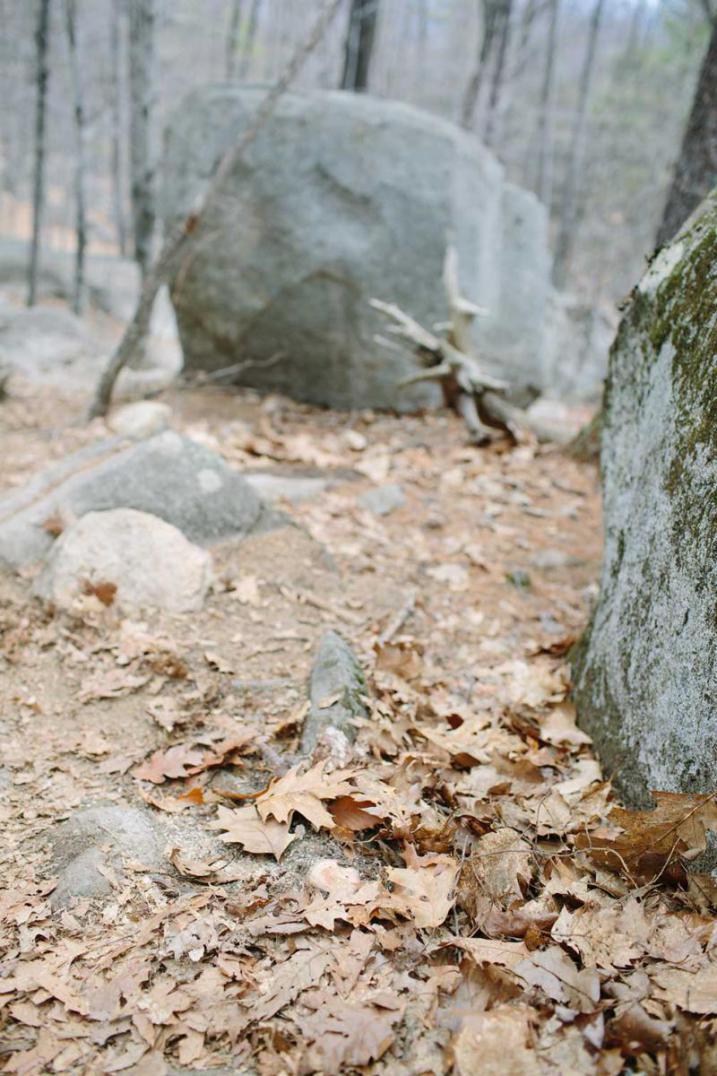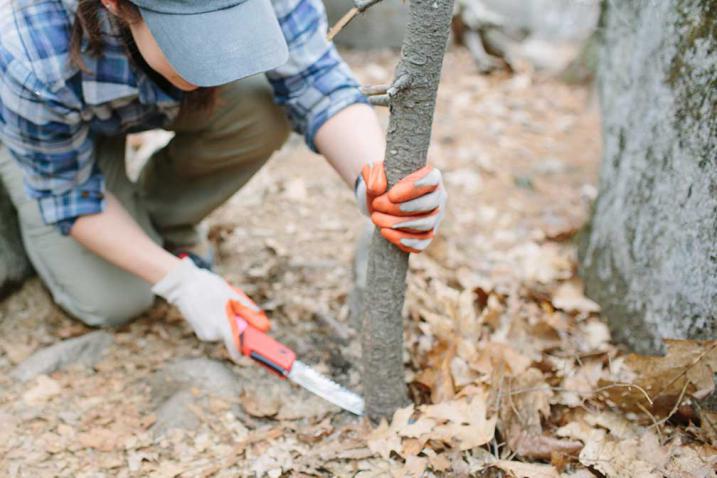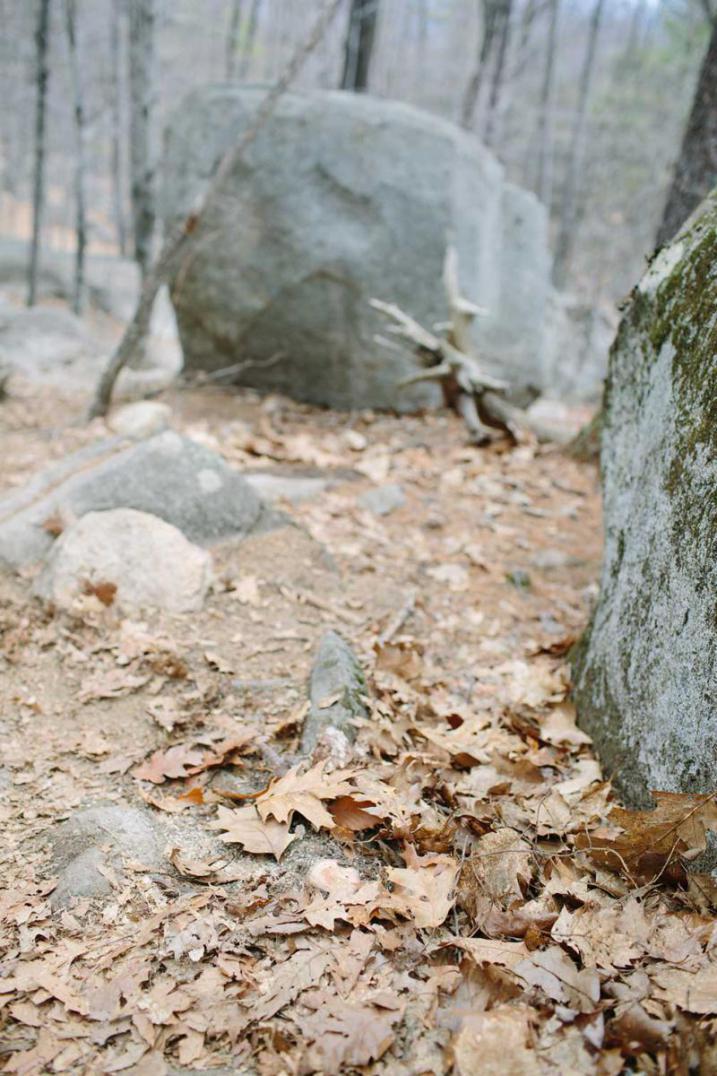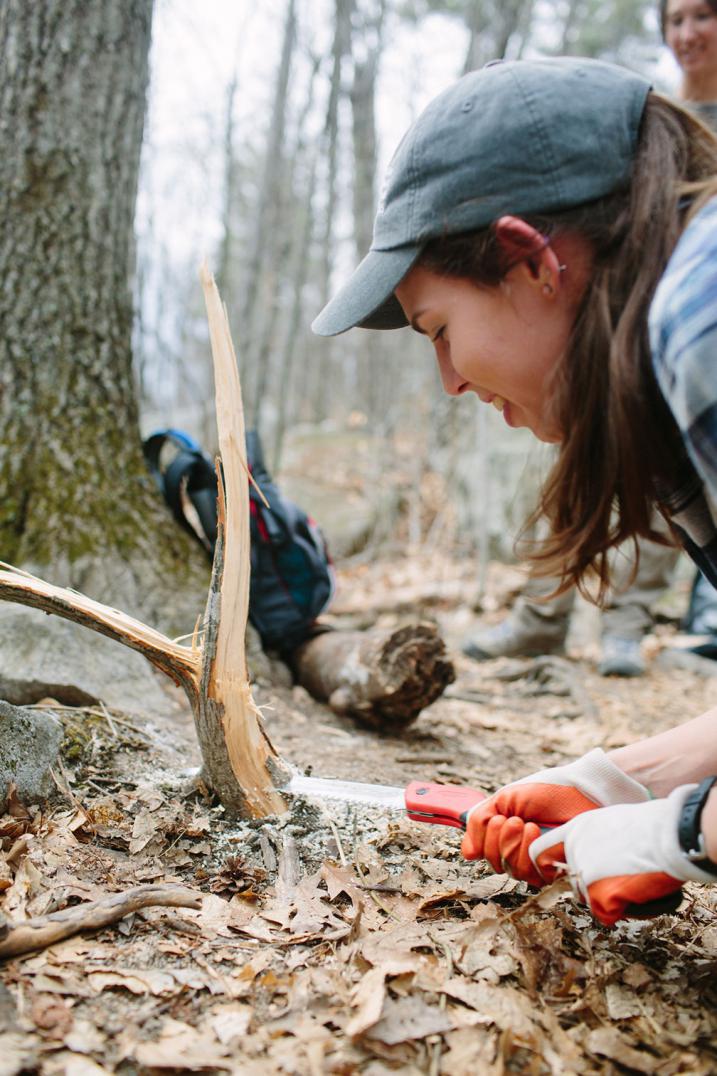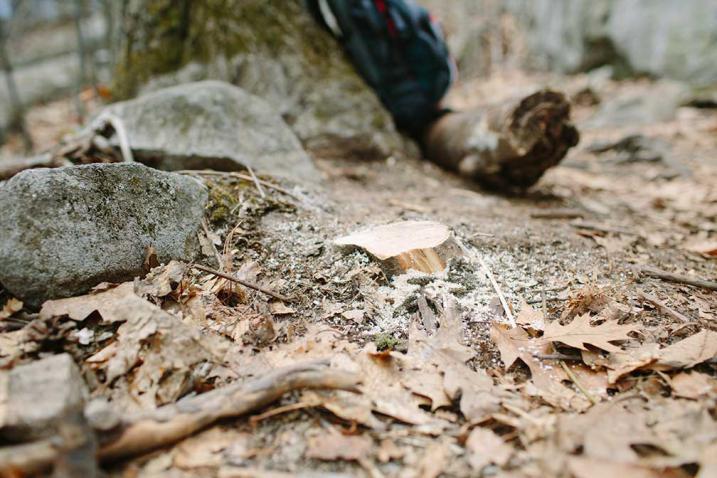Stewardship Tip: To Prune or Not to Prune?
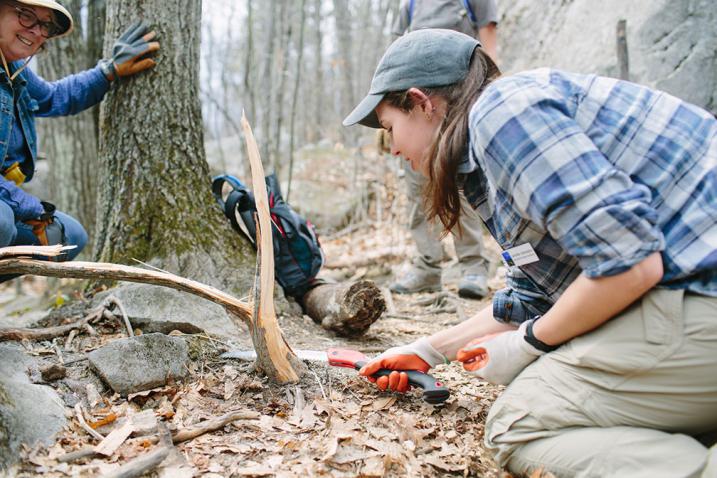
No one likes to get whacked in the face by a branch when hiking. Trail volunteers spend a lot of time in the spring pruning the trails under their care. In the trail world, this is also called "brushing the trail." It's usually easy to pick out which branches to prune, as the most obvious ones whack hikers as they go by! Most trail volunteers also know to prune tree branches back to their growth collar (also called branch collar) so the tree can heal (here's a good diagram). Another reason to do this is to avoid leaving stubs or sharp ends that protrude into the trail, removing potential hazards for passersby.
Trail pruning's gray area comes with small trees within or near the edge of a trail corridor.How do you decide when to cut down a whole tree, rather than just prune the branches? Trails with different kinds of users will have different standards for how high and wide to clear branches and trees. Generally speaking, a simple check for a hiking trail is to walk through the trail with outstretched arms as a measure for clearing. This is helpful, but not perfect. If you follow this method alone, you'll end up with a bunch of small trees or saplings on the edge of a trail with half their branches cut off. The tree that remains is not going to be very happy or healthy in this state for long.
Below is an example of one such tree I found while hiking with family along the popular Boulder Trail to Mt. Major in Alton, NH. From the picture it looks like this tree is actually in the middle of the trail, but on a high-use and rocky trail like the boulder trail, it's sometimes difficult to see the center of the trail corridor. Perhaps at one time this tree was right on the edge of the trail. Some branches look like they were pruned with loppers, but some might have broken off from hikers grabbing hold as they pass by. While still alive, this tree has clearly seen better days and is now missing half its branches (and the top!).
Symmetry is important for the tree's health and it doesn't hurt that it looks nice, too. If you find yourself pruning branches and start to notice you're cutting a lot on one side, look at the symmetry to see how lopsided it's become. Consider removing the whole tree if you think too many branches are gone from one side. A good rule of thumb is that if you are taking more than 1/3 of the branches you may want to remove the whole tree. This tree from the Boulder Trail definitely doesn't make the cut.
Now that we've decided to remove it entirely, let's do it right. Weeks after the 1st photo was taken, I was back on the Boulder Trail on Mt. Major, but this time I was with a group of volunteers for an Earth Day clean-up of the trails hosted by the Society for the Protection of New Hampshire Forests (Forest Society). We mostly picked up trash, but stopped in a few spots to trim some downed trees and other hazards that might cause hikers to trip. Lo and behold, this little tree was still there, so Jenn Seredejko, Land Steward Program Coordinator for the Forest Society, whipped out her pruning saw to remove this little tree.
Anytime you're cutting a tree that's within the trail corridor (like this one arguably is) you'll want to cut the tree so the stump is flush with the ground. This will prevent a tripping hazard for trail users.
Now the unhealthy, lopsided tree is removed and the stump is flush with the trail. Soon to be covered by leaf litter, you'd never know it was there. Below is another photo of Jenn cutting a similar tree, which had broken on the trail and become a hazard. While she wants to keep the stump as flush with the trail as possible, she also demonstrated another important tip: Keep your saw blade out of the dirt. This is important for keeping your trail tools sharp and lasting a long time. Don't let your efforts to get the stump flush ruin a good trail tool by making it dull.
Before you start trimming the tree you can also move away any leaf litter or other debris that is in your way. Sometimes the slope of the trail or other things like rocks nearby will limit your ability to cut flush to the trail. That's ok! This looks fine, since one side is flush with the trail and the other will likely soon be covered by more organic material.
Basic Trail Maintenance for Volunteers Training Guide
